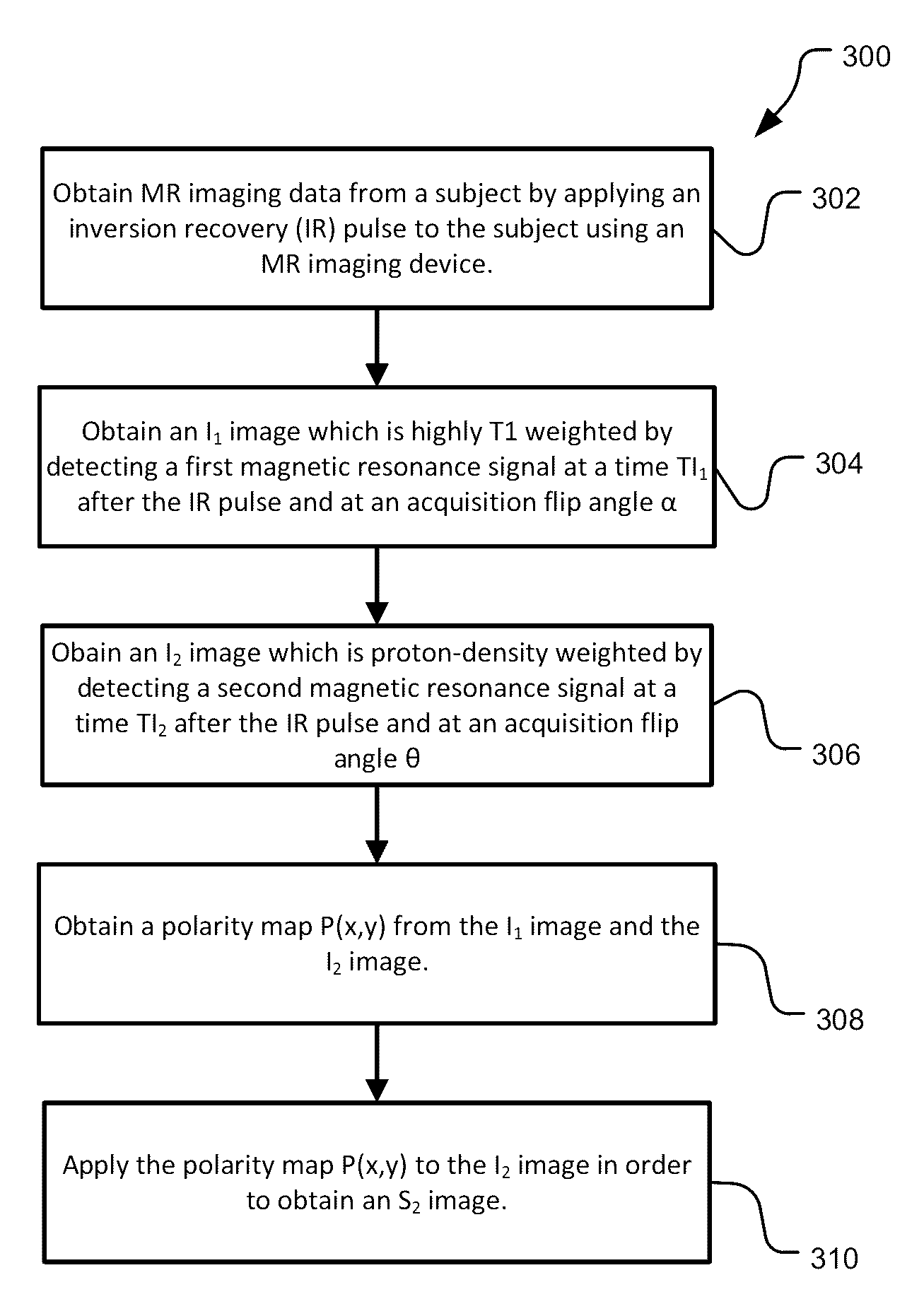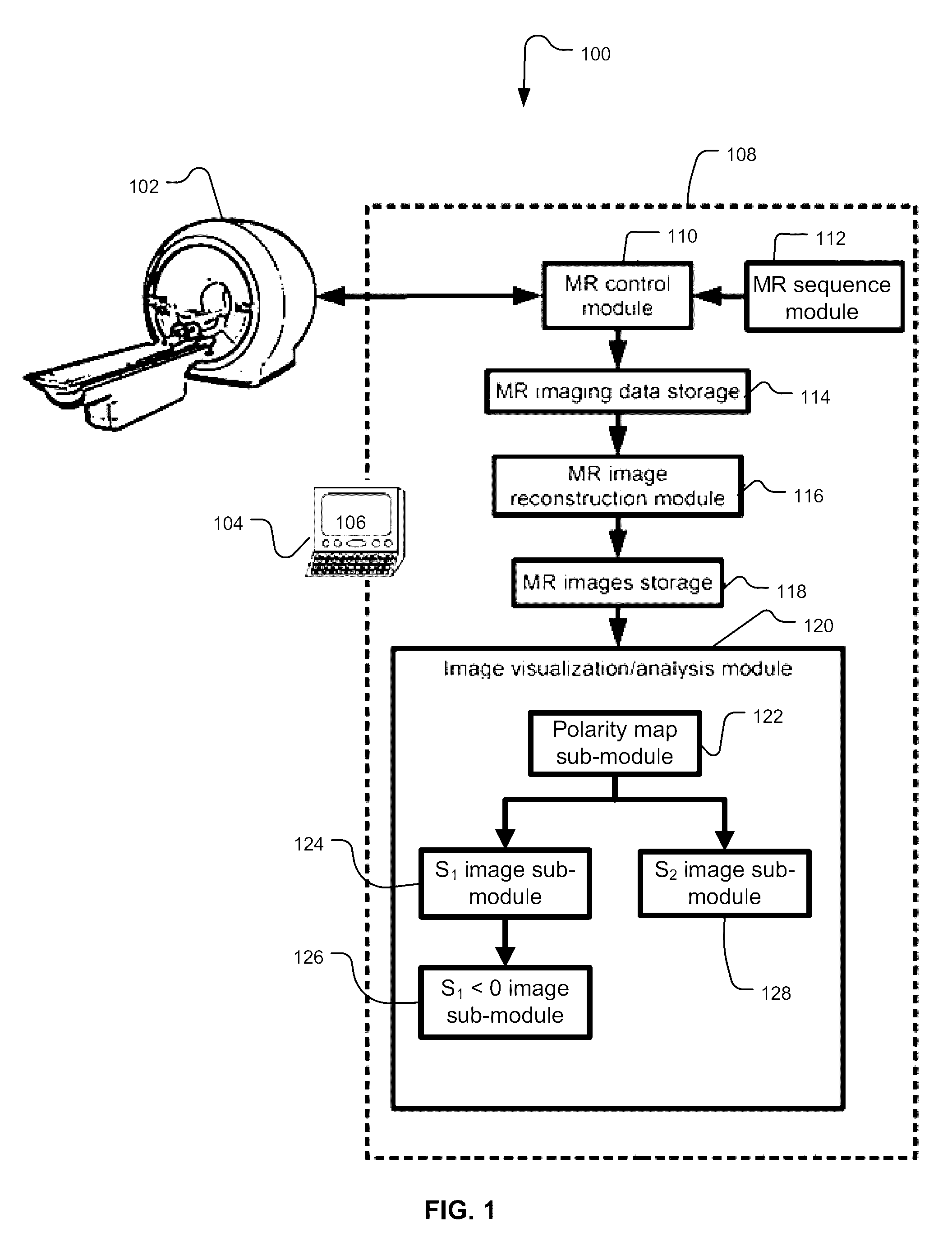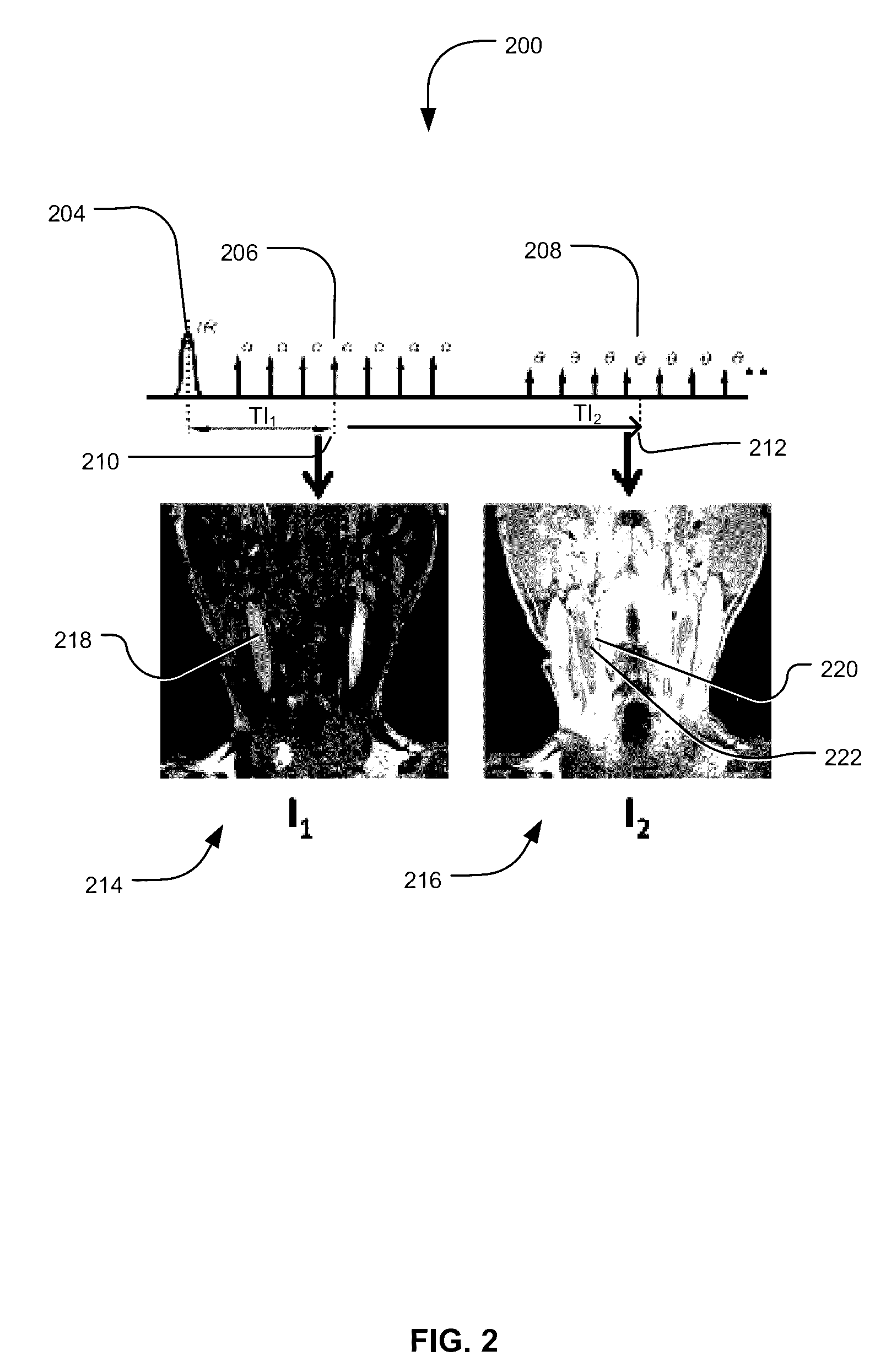Dual contrast vessel wall MRI using phase sensitive polarity maps
a phase sensitive, dual-polarity technology, applied in the direction of reconstruction from projection, measurement using nmr, instruments, etc., can solve the problems of morbidity and mortality
- Summary
- Abstract
- Description
- Claims
- Application Information
AI Technical Summary
Benefits of technology
Problems solved by technology
Method used
Image
Examples
Embodiment Construction
[0018]In the following description, various embodiments of the present invention will be described. For purposes of explanation, specific configurations and details are set forth in order to provide a thorough understanding of the embodiments. However, it will also be apparent to one skilled in the art that the present invention may be practiced without the specific details. Furthermore, well-known features may be omitted or simplified in order not to obscure the embodiment being described.
[0019]In some procedures, magnetic resonance imaging (MR imaging or MRI) can obtain data on the internal structure of a subject. For example, SNAP MRI operates by using an inversion recovery gradient echo MRI sequence and collecting two images. A first image is collected at a time TI1 and at a flip angle α calibrated to produce a T1-weighted image, or I1 image. In a T1-weighted image, fatty tissues tend to appear bright and fluids tend to appear dark (or hypointense). A second image is collected a...
PUM
 Login to View More
Login to View More Abstract
Description
Claims
Application Information
 Login to View More
Login to View More - R&D
- Intellectual Property
- Life Sciences
- Materials
- Tech Scout
- Unparalleled Data Quality
- Higher Quality Content
- 60% Fewer Hallucinations
Browse by: Latest US Patents, China's latest patents, Technical Efficacy Thesaurus, Application Domain, Technology Topic, Popular Technical Reports.
© 2025 PatSnap. All rights reserved.Legal|Privacy policy|Modern Slavery Act Transparency Statement|Sitemap|About US| Contact US: help@patsnap.com



